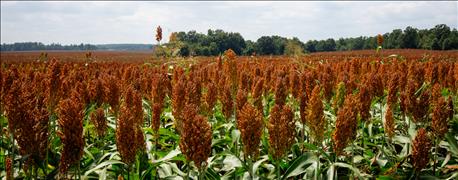Explore our blog featuring articles about farming and irrigation tips and tricks!
Numbers Behind Great Sorghum Comeback Truly Amazing

By:Chris Cogburn
Exceeding expectations is now an annual occurrence for U.S. sorghum producers. Since the drought of 2011-2012, each year means another record broken or another challenge overcome. This progression is nothing new for an industry often thought of as on the brink of extinction. However, a few specific numbers behind the great sorghum comeback are truly amazing, even for producers as unrelenting as those who grow sorghum.
The 2016 harvest brought another national yield nearing 80 bushels per acre. A phenomenal yield by any standard, but compared to the low point of the 2011-2012 drought — when the U.S. sorghum yield failed to break the 50-bushel mark for the first time in 29 years — the 2016 triumph takes on new meaning.
This 56% increase occurred in just four years and is by itself a proud accomplishment for U.S. sorghum producers facing unprecedented economic stress. Is there a deeper meaning or a larger trend at play? I believe the answer is “yes.” Sorghum producers continue to hone their craft, aided in their quest for higher yields by a breeding community whose hard work to improve sorghum genetics is finally beginning to pay off.
Sorghum stakeholders are often frustrated by the crop’s seeming inability to live up to its yield potential. The 15-year trend yield projection is only 71 bushels, and given the world record is 249 bushels, this frustration is understandable. However, it is important to remember the Sorghum Belt lies in what was once known as the Great American Desert, so trend yields and production potential must be adjusted to reflect this challenging environment.
Stay up to date on all T-L news and get alerts on special pricing!


